Decorating parks has always been a unique chapter in the story of statues in Budapest. The greens of Margaret Island, the City Park and the parks of Buda are all filled with beautiful works of art. As gardens and groves are traditionally considered the homes of the muses, statues of artists, writers, painters and composers are also commonplace. The older works show something of sacred art. Parks with playgrounds are a category of their own, filled with figures from stories and fairy tales.
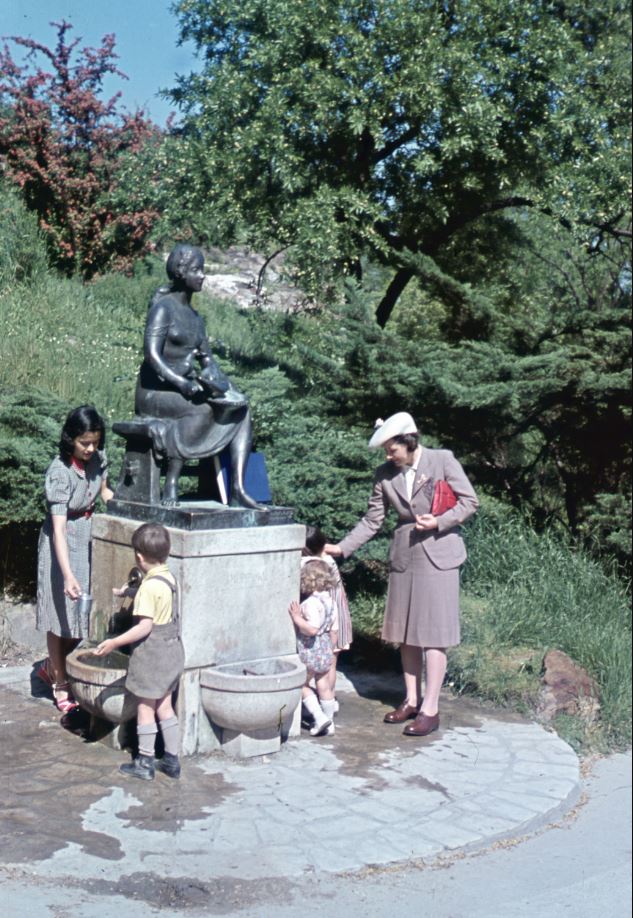
Colour photograph of the Cinderella Fountain by Ede kallós on Gellér Hill from 1939 (Source: Fortepan/No.: 75501)
In the late 1920s, the capital's public education department initiated the construction of drinking fountains decorated with statues in playgrounds around Budapest. The goal was to promote the aesthetic education of children. Thus, the most respected sculptors of the age were tasked with bringing these figures to life.
The plans for a Cinderella Fountain by Ede Kallós were the first to gain the approval of the department, which recommended that it be ordered by the city council. At a sitting held on 21 November 1929, the Council tasked Ede Kallós with creating the sculpture. Its location was also selected not long after: the playground on Gellért Hill, which remains popular even today. The fountain was erected about 1.5 years later, in the spring of 1931.
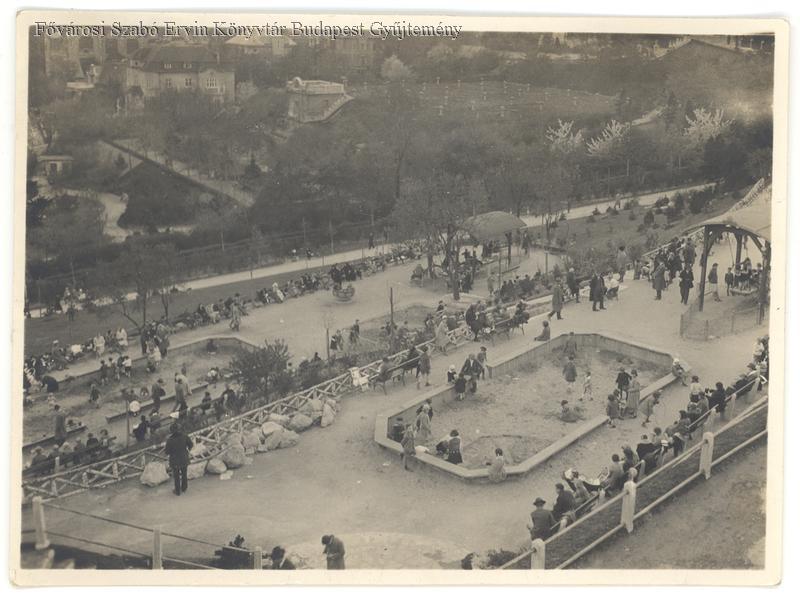
The playground on Gellért Hill in the 1930s (Source? FSZEK Budapest Collection)
Its creator, Ede Kallós was born in Hódmezővásárhely in 1866. His birth name was Éliás Klein. Hódmezővásárhely was also the home of two of his well-known contemporaries and friends: the sculptor János Pásztor, and the painter Gyula Rudnay.
Kallós studied art in Budapest and later Paris. He was a relatively older man when he designed the Cinderella statue, having completed a significant oeuvre. His place among Hungarian sculptors is illustrated by his works displayed around Budapest: his Kölsey statue on Batthyány Square (the original of which was in Nagykároly [Carei, Romania]), several statues on the parliament building, and the Vürüsmarty Monument he created with Ede Telcs. Ede Kallós died on 11 March 1950.
The clay model of the Cinderella statue (Source: Uj Idők, 20 July 1930)
Looking through his works, it becomes apparent that sculpting female figures was not so natural to him as to his friend János Pásztor. Only a few female figures on tombstones and a handful of stylized Hungaria figures can be found amongst his works. Nevertheless, his work on the Cinderella statue refutes all prejudice based on this assumption.
Cinderella was depicted with pigeons in the playground statue (Source Képes Krónika 27 June 1931)
First of all, this statue seems almost alive. The graceful simplicity of the female form showcases every characteristic of Cinderella in the story: beauty, dignity, femininity, diligence and purity. This is all depicted in a way that even children would have found easy to understand by borrowing a motif from the story: the pigeons helping Cinderella pick the lentils from the ashes.
The slides of the playground today. In the background the bastion-like lookout platform seen in the previous archive image (Photo Gergely Flier/pestbuda.hu)
Interestingly – if an old newspaper article can be given credit – the statue's model once spoke to the poet and journalist Lili Bródy about her life. The naive young girl's story fits well into the children's world of the playground: "When I was a child I use to cry often that lief would be boring, grey, getting up in the morning and going o bed at night, and nothing ever happening. And, since I've been a model, I've been happy. This is an interesitg life, I loev painters, they always take me on holiday to the artists' colonies in the summer. What else would I want? There's a Cinderella statue somewhere in Buda, that's me, and.. well... (she gestures strangely with her hand) their are two grave stones in the Kerepesi graveyard as well. It was so funny to see myself on a tombstone!"
Unfortunately, the model's name is not included in the article published in the 19–25 June 1931 issue of Színházi Élet. All the model says is: "Just write Aida, that's how everyone knows me."
The slides on Gellért Hill in the early years (Source: Dezső Morbitzer: Public gardens and avenues in Budapest. In: Tér és Forma, September 1933)
The playground on Gellért Hill was unique even then. One of the oldest still operating playgrounds in Budapest was built towards the end of the 1920s, utilising the terraced structure and friendly slope of Gellért Hill's southern side. As a result, the playground was originally built on two – or counting the lowest level slightly further away, on three - levels. At the time, the playground housed rudimentary slides and was built as part of a comprehensive redesign of the park. On 22 September, the Est newspaper wrote: "... on the southern slopes of Gellért Hill, the beauty of which was borne legends around Budapest. 10–12 years ago where was this park of wonders, museum of plans that now spreads across the hillside, the country's mildest southern slope, sunniest plot of land, the stunning Riviera of Budapest? Where where these emerald fields, lawns that now so easily cheer the tired eye? Where were the perfectly built walkways and rest areas? Where the wonderful Fairlyland of children visiting from all over Pest and buda, and their wonderful bronze guarding, Cinderella."
Children around the statue (Source: Endre Liber: The formation of the Budapest baths, vol. 3 – Budapest Statistical Bulletins 82/2, 1934)
Anyone who visits the area today on a summer afternoon will see that this Fairyland still exists, and its joy is still unchanged. However, the playground's beautiful Cinderella is no more. It was lost in the tragic months of the siege of 1944–1945 and has not yet been reconstructed. Although, it was a masterpiece that would deserve to be. A small fountain statue can still be found in the corner of the playground, one of Miklós Melocco's early works, the Pelican Fountain, erected in 1965.
The statue of Cinderella would have stood somewhere in the vicinity of Miklós Melocco's Pelican Fountain (Photo: Gergely Flier/pestbuda.hu)
Cover photo: Picture of the fountain from Endre Liber: The formation of the Budapest baths, vol 3.

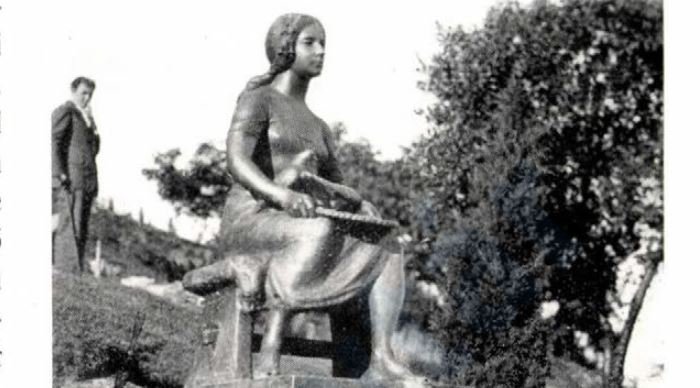

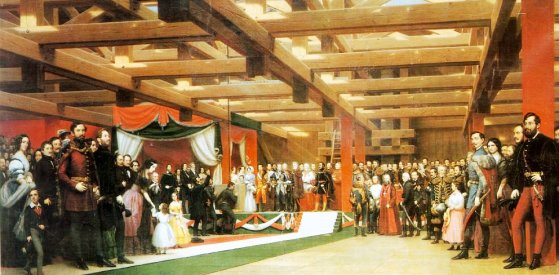

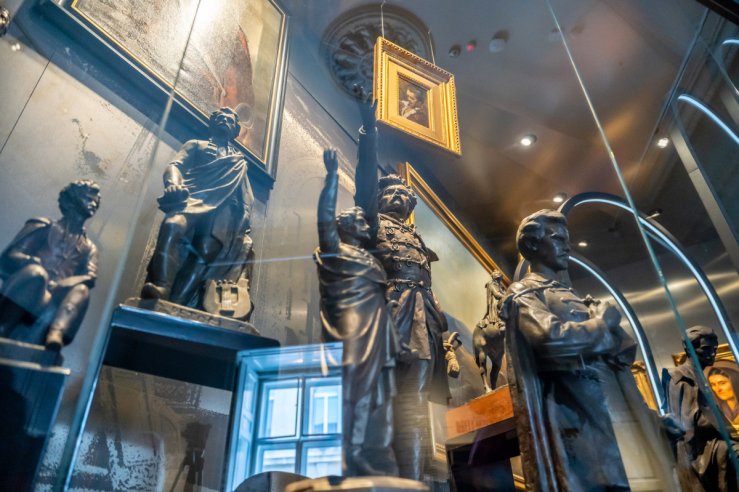

































Hozzászólások
Log in or register to comment!
Login Registration